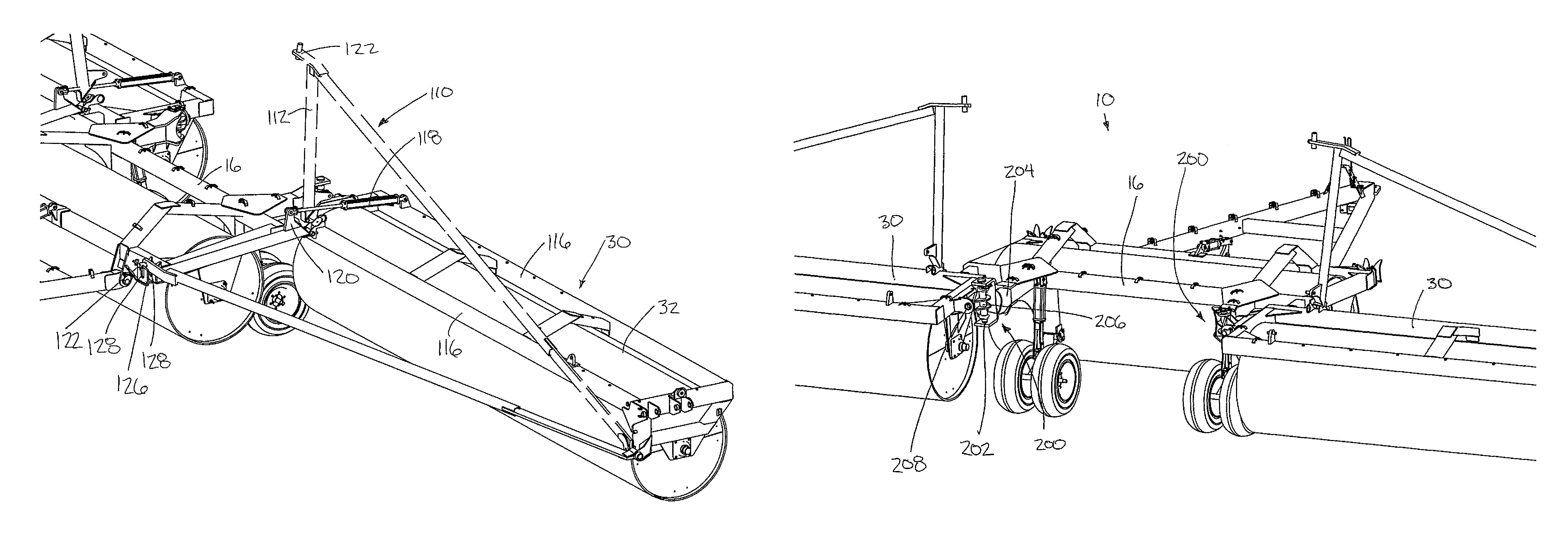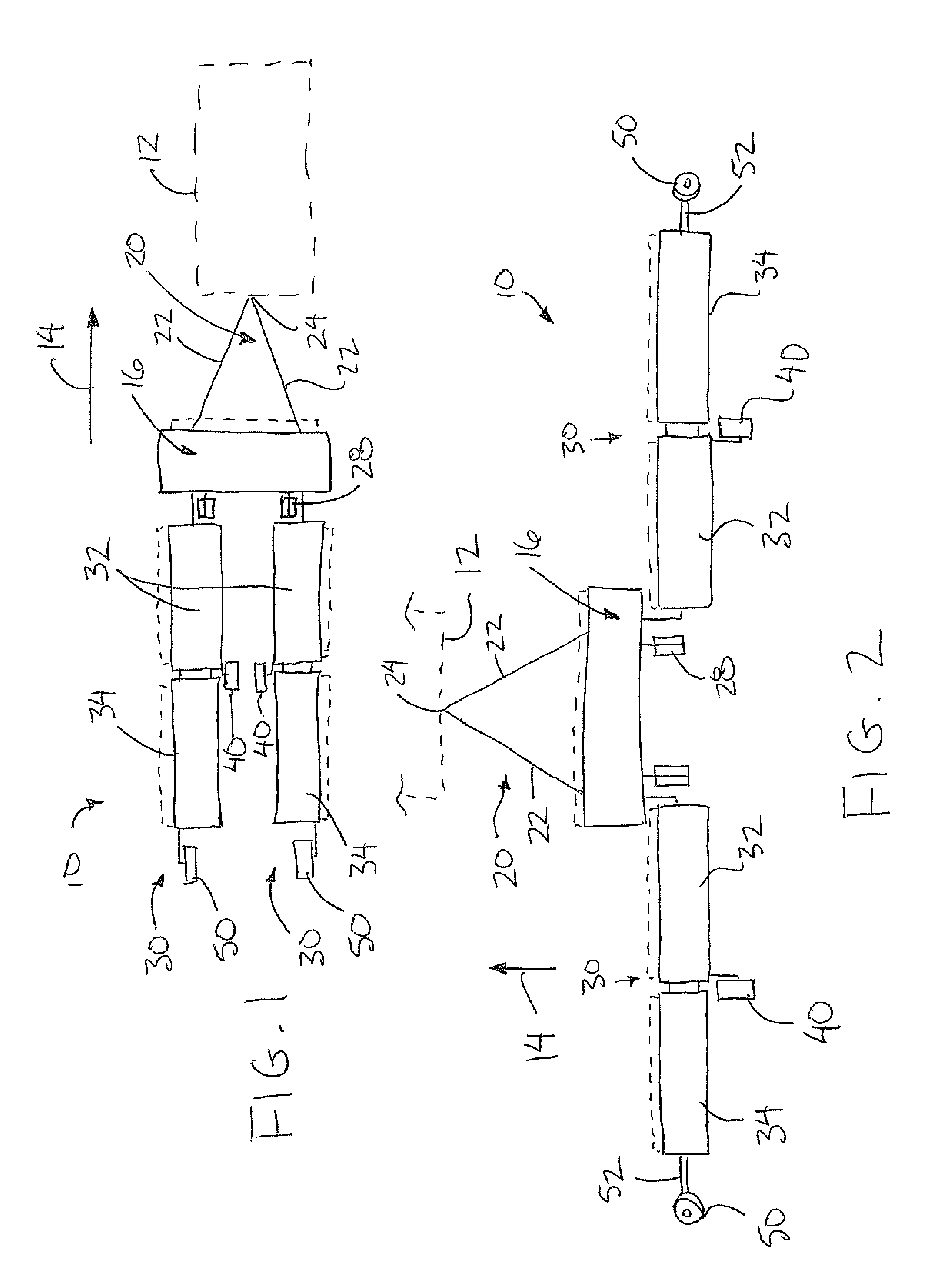Land roller
a technology of land rollers and implements, applied in the field of land rollers, can solve the problems of increasing the mass and size of the wings, unable to move, and shortening the beams of heavy beams
- Summary
- Abstract
- Description
- Claims
- Application Information
AI Technical Summary
Benefits of technology
Problems solved by technology
Method used
Image
Examples
Embodiment Construction
[0126]Referring to the accompanying figures there is illustrated a land roller implement generally indicated by reference numeral 10. The implement 10 is particularly suited for use with a towing vehicle, for example a tractor 12 for rolling movement across the ground in a forward working direction 14 of the tractor.
[0127]The implement 10 comprises a central frame portion 16 which is elongate in a lateral direction perpendicular to the forward working direction. The central frame includes front and rear beams 18 spanning the width of the frame and interconnected by suitable crossbars.
[0128]A hitch member 20 is coupled to the front of the central frame portion 16. The hitch member generally comprises two arms 22 which are hinged at rear ends on the front beam of the central frame portion and which extend forwardly and inwardly to be joined at a front end locating a suitable coupling 24 for connection to the towing vehicle.
[0129]The central frame portion 16 supports a central roller 2...
PUM
 Login to View More
Login to View More Abstract
Description
Claims
Application Information
 Login to View More
Login to View More - R&D
- Intellectual Property
- Life Sciences
- Materials
- Tech Scout
- Unparalleled Data Quality
- Higher Quality Content
- 60% Fewer Hallucinations
Browse by: Latest US Patents, China's latest patents, Technical Efficacy Thesaurus, Application Domain, Technology Topic, Popular Technical Reports.
© 2025 PatSnap. All rights reserved.Legal|Privacy policy|Modern Slavery Act Transparency Statement|Sitemap|About US| Contact US: help@patsnap.com



